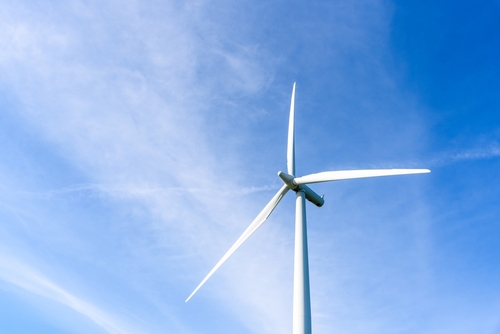Wind turbine testing facility in Massachusetts gets upgrade

The Massachusetts Clean Energy Center’s Wind Technology Testing Center (WTTC) was recently upgraded to test larger land-based and offshore wind turbines.
The WTTC, located on a deepwater port along Boston’s Mystic River, conducts stress tests on wind turbine blades that are delivered via from ships and are moved into the warehouse-style building.
When the WTTC opened in 2011, it was testing land-based wind turbine blades that typically spanned around 50 meters, or 164 feet. Now, the blades are larger so that they can harvest more energy at lower wind speeds. This has necessitated the need for testing operations at the center to be upgraded. The recent upgrades at WTTC enable the facility to receive and evaluate blades up to 120 meters (393 feet) long. The improved testing capability helps expedite the deployment of offshore wind power.
“If you can get the same power with six fewer machines, there are cost savings all over the map—such as less time installing equipment at sea,” Daniel Beals, program analyst with the U.S. Department of Energy’s Wind Energy Technologies Office (WETO), said. The WTTC upgrades are funded by WETO.
Three prototype blades for the wind turbines used at Vineyard Wind 1 were tested there for over a year. When the project located off the Massachusetts coast is complete, 62 wind turbines will generate power for more than 400,000 homes and businesses. Without WTTC, the blades would have needed to be tested at a similar facility in Europe, adding time and cost to the project.
“But from an engineering standpoint, it gets more and more difficult,” Rahul Yarala, WTTC’s executive director, said. “Turbine blades are getting heavier. They’re getting more complicated. So not only do they have to be designed properly; they have to be tested properly as well to have full confidence that they will run smoothly.”
To start, blades are mounted onto the inside of the facility, like wings sprouting from the wall. In the past, only one installation angle would have been possible. A new wedge plate system enables a blade to be angled anywhere from 0 degrees, or parallel with the ground, to 12 degrees, where the tip is angled toward the roof.
“That way, we’re able to apply a load (force or stress applied to a wind turbine blade) at different blade angles,” Yarala said. “We can adjust the blade angles to study different worst-case situations, like 50-year wind gusts or Category 5 hurricane wind speeds.”
The WTTC team strategically places clamps that apply loads, mimicking the outdoor elements, at different points along the blade. The recent improvements have expanded the number of possible load points from 8 to 11, which is necessary to accommodate the increased blade length. The tests at WTTC simulate two decades of wear and tear over the course of a few months.
Included among the upgrades, up to 300 sensors placed along the wind turbine blade transmit data about how the blade responds to forces applied during testing. The WTTC updates also included hardware and software systems that can handle the increase in data that comes with longer blades.
However, the turbine blades are beginning to outgrow the existing 90-meter building, requiring researchers to cut the tips off blades to bring them inside for testing. An expansion, however, would make the building both longer and taller to allow for ultralong blades and bending space.
